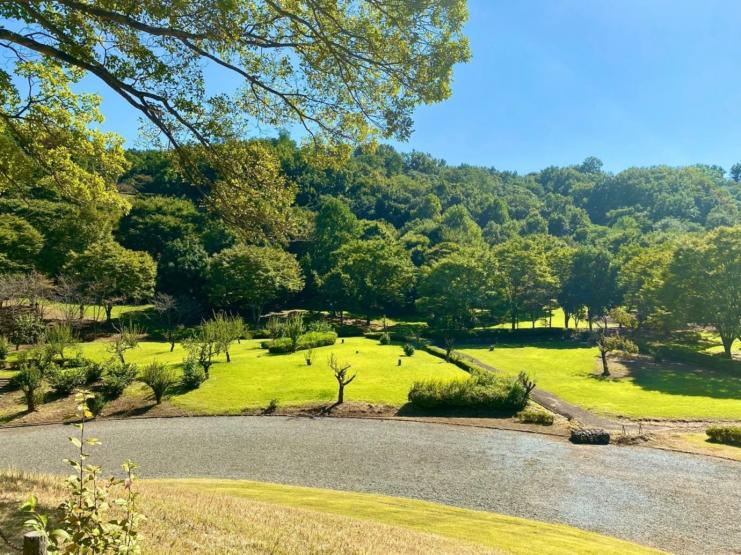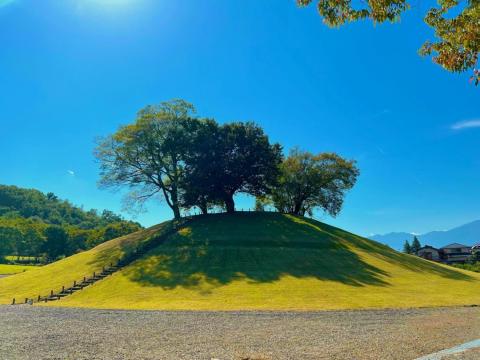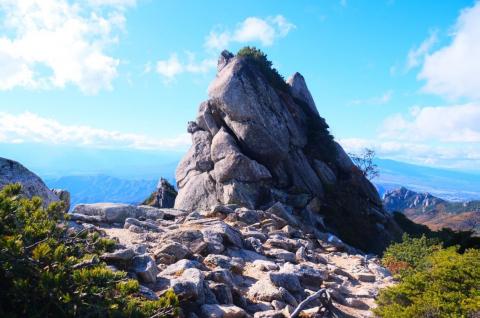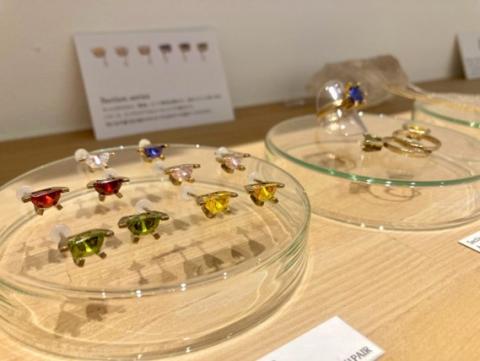Main content starts here.
What’s Underneath?
Exploring Yamanashi’s Kōfuns
My perfect Sunday morning in my home country of Britain would be spent in my bed, wrapped up like a warm toasty cinnamon bun with a steaming hot mug of tea or hot chocolate. Even though I am studying abroad halfway around the world in Japan with many sights to see, my ideal Sunday morning does not falter from this simplistic original desire. Knowing this fact, you may now understand why the mandatory class trip which required me to wake up at eight a.m. on a Sunday morning was not perhaps my ‘cup of tea’, if you will. Especially when the weather was forecasted to be a stifling thirty degrees – excessively too hot for my pasty white skin accustomed to the commonly cold and wet British climate. But on discovering that on this trip I would be visiting Eastern Japan’s largest surviving Kōfun burial mound, I know that leaving the warmth of my humble abode will be worth it.
As I am exploring Yamanashi from the outsider’s perspective as an international exchange student, I believed that there was no better way to connect with this prefecture than by embracing the opportunity to study its folklore and archaeology whilst at the International College of Liberal Arts (iCLA). Since arriving in the prefecture, one thing I have noticed is that Yamanashi works conscientiously to protect its history, culture and tradition - especially prevalent through the preservation of the local ancient burial mounds (also referred to as tumulus or kōfun [古墳]).
Sure, the kōfun design protects itself using a thick earthy layer upon the ground’s surface, but there is no way their structure or the graves that lie inside could have survived multiple
centuries unless the local people had made an effort to preserve them. A newfound friend at iCLA informed me that Kai Chōshizuka kōfun – our class trip destination – impressively dates back to the late fourth century, and she guaranteed me that seeing what of this place has survived to this day would be a sight that I wouldn’t want to miss. And I soon found out that she wasn’t wrong.
However, my initial view of the kōfun wasn’t exactly promising. The first thing I laid eyes on was a giant blob of green. But I soon realised this was entirely my own fault, as I had forgotten to put on my glasses. Which – expectedly - enables me to see properly. Upon approaching closer to the unknown blob and balancing the metal frame above my ears, a stunning landscape embodying a green early-autumn hue and a lush forest surrounding a magnificent tumulus greeted my eyes.
The sweltering heat no longer bothered me, instead fixated by the sound of gravelled steps crunching underneath my feet as I began my ascent up the tumulus. Step after step; my body had developed its own rhythm, my mind becoming calmingly vacant; in this moment, I was at peace. I was so engrossed in the moment, barely noticing that I was clambering up the final stretch with a damp brow and legs of jelly. But that didn’t bother me. Because I had finally reached the top.
After wiping away a few stray beads of sweat from my forehead, I finally had the chance to inhale a deep breath of crisp fresh air and look out at the stunningly vast panoramic view displayed before me. As I gazed out over this breath-taking landscape of Kōfu city engulfed between the endless cascades of forested mountains, my mind became at peace.
Soaking up more of the breath-taking landscape, behind me, flourishing and thriving was Sone Kyuryo Park. Even though it is currently September, it feels as if this park has a new life – almost like spring has been revived and embodied autumn.

Sone Kyuryo Park - the view from the peak of Kai Chōshizuka kōfun
Or this park even held a season of rebirth – a renaissance of history, laying inside of the tumulus that rested below me. The Kai Chōshizuka mound I was standing upon was, in itself, honestly captivating. I know the idea of a burial mound initially doesn’t sound that exciting; ‘Who wants to go see the grave of a dead guy’, am I right? But once you stand atop of this grand kōfun of one hundred and sixty-nine metres in length, it certainly makes you begin to wonder who exactly was important enough to be buried in such an extraordinary fashion. If
King Richard III of England can be discovered under a car parking lot in Leicester (Neuman, 2017), who knows which important ruler lies in this tumulus near the FamilyMart in Shimosone?
This chamber could not have been built for just any member of the ruling class; you can almost feel the sacred presence of a former emperor proudly buried 15 metres below sunlight - reflecting on his legacy through expensively handmade bronze mirrors whilst being transported into his next life protected by extravagant iron swords. So who was this distinguished ruler? Actually, to this day, nobody knows exactly who was buried here. But it is fun for me to guess. And it is not only me trying to guess. This mystery has plagued archaeologists for centuries – avidly fighting to discover the history that has disintegrated like the evidence itself.
However, one would be foolish to think that this is the end of this emperor’s reign of influence. And this also isn’t the end of his history. A mere two hundred and fifty metres away from this burial mound, lies Maruyamazuka tumulus – believed to hold the emperor’s successor.

Maruyamazuka tumulus - the largest round barrow in the Yamanashi prefecture (Yamanashiken Sone Kyuryo Park (n.d.).
I had imagined that the distinguished emperor in the Kai Chōshizuka kōfun was buried alongside bronze mirrors and iron swords. Amazingly, I found out that my prediction – in historical context – actually reflected an element of truth. Because these mirrors and swords, alongside other fascinating grave artefacts, were actually recovered from this exact tumulus centuries later and are currently displayed for all to see in the Yamanashi Prefectural Archaeological Museum – less than ten minutes’ walk from the tumulus site itself (Yamanashi Tourism Organization, n.d.).
So, instead of my typical Sunday morning spent below the warm covers of my bed with a hot cuppa, I spent it atop of a tumulus consuming a refreshingly cool ice cream. And I regret
nothing. Given the chance, this is how I would choose to spend every Sunday. Nothing can quite compare to the mysteries woven into tomb history – and I realise – this is what Yamanashi should be known for.
Evie King
Kai Chōshizuka kofun Website (Japanese)
山梨県/国指定史跡銚子塚古墳附丸山塚古墳 (pref.yamanashi.jp)(外部リンク)
References
Neuman, S. (2017, December 21). English Car Park Where Remains Of Richard III Were Found Declared A Monument. NPR. Retrieved November 30, 2022, from https://www.npr.org/sections/thetwo-way/2017/12/21/572502499/english-car-park-where-remains-of-richard-iii-were-found-declared-a-monument
Yamanashiken Sone Kyuryo Park (n.d.). Maruyamazuka Tumulus, 山梨県曽根丘陵公園. Retrieved July 5, 2023, from https://www.sonekyuryo.jp/en/map/map07/
Yamanashi Tourism Organization. (n.d.). Kai Choshizuka Tumulus. Official Travel Guide Yamanashi. Retrieved November 30, 2022, from https://www.yamanashi-kankou.jp/english/discover/kai-choshizuka-tumulus.html
Published on
- September 5, 2023
Share
-

The Golden Peak (金峰山―Kinpusan) of Yamanashi
May 23, 2025
-

May 23, 2025
Home of Mt. Fuji > Kaleidoscope Students Journal > What's Underneath? Exploring Yamanashi's Kōfuns
